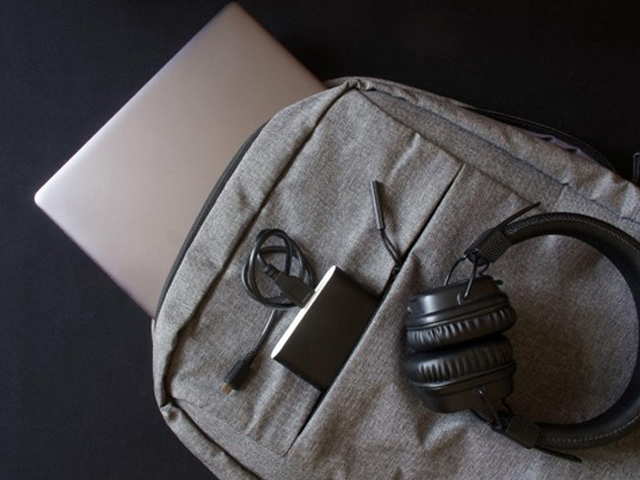
In AdTech, every detail can make or break an ad campaign. Here, the power of photography is often underestimated. High-quality images aren't just eye candy. They're strategic tools that can significantly influence consumer behavior. The Epom team, experts in AdTech solutions, emphasizes the crucial role of top-notch photography in achieving successful advertising outcomes.
The Epom Philosophy: Quality Over Quantity
The Epom team operates on a simple but powerful principle: always use high-quality photographs. This isn't about aesthetics alone. It's about performance. Poorly chosen or low-resolution images can dilute a brand's message and reduce the effectiveness of an ad campaign. Conversely, high-quality visuals can captivate an audience, evoke emotions, and drive actions.
Choosing the Right Photograph
Here are some key recommendations from the Epom Ad Serving Tech Solutions company:
- Relevance. An irrelevant photo can confuse potential customers and weaken the campaign's message.
- Emotion. Photos that evoke emotions tend to perform better. Whether it's joy, surprise, or curiosity, emotional resonance can significantly boost engagement.
- Composition. Good composition can draw the viewer's eye to the most important part of the ad. Elements like the rule of thirds, leading lines, and balanced framing can make a significant difference.
The Impact of Photo Quality on CTR
The quality of photographs used in advertising has a direct impact on click-through rates (CTR). Content featuring compelling images averages 94% more total views than those without. Furthermore, another study found that ads with high-quality images see up to a 42% increase in CTR compared to ads with poor-quality visuals.
These statistics underscore the importance of investing in high-quality photography for ad campaigns. Not only do they enhance the visual appeal, but they also improve the effectiveness of the ads, leading to better engagement and higher conversion rates.
Here are practical tips for AdTech photography:
- Use proper equipment. High-quality cameras and lenses are crucial for capturing sharp, detailed images. Smartphone cameras, while convenient, often fall short in producing professional-grade photos.
- Edit wisely. Post-processing can enhance the quality of your photos, but it should be done judiciously. Over-editing can result in unnatural images that might turn off potential customers.
- Test different images. A/B testing different photographs can help identify which visuals resonate most with your target audience. This data-driven approach can optimize the performance of your ad campaigns.
According to a survey by Venngage, original graphics are the most used type of visual content by marketers at 36%, followed by stock photos at nearly 34%.
Beyond the Basics: Advanced Photography Techniques in AdTech
Advanced techniques can amplify the impact of visuals in advertising campaigns.
Storytelling Through Imagery
One advanced technique is storytelling. Photos that tell a story can engage viewers on a deeper level. For instance, instead of simply showcasing a product, a photo can depict the product being used in a real-life scenario. This approach not only highlights the product’s features but also shows its practical benefits.
Leveraging Color Psychology
Color plays a crucial role in influencing consumer behavior. Different colors evoke different emotions and responses. For example:
- Blue conveys trust and professionalism, making it ideal for tech and finance ads.
- Red, on the other hand, evokes urgency and excitement, suitable for sales and promotions.
By strategically selecting colors that align with the campaign’s goals, advertisers can subtly influence how viewers perceive their message.
Consistency Across Campaigns
Consistency in visual style across different campaigns helps in building brand identity. This includes maintaining a consistent color palette, composition style, and even the type of models used. Such consistency ensures that whenever a consumer sees an ad, they can immediately recognize the brand. This recognition builds trust and familiarity, crucial components in the decision-making process.
Utilizing User-Generated Content
User-generated content (UGC) can be a goldmine for ad campaigns. Real photos from real customers using your product not only provide authentic visuals but also serve as powerful testimonials. Encouraging customers to share their photos and then featuring these in ads can create a sense of community and trust. This approach not only saves costs on professional photography but also boosts credibility.
The Role of AI in Photography
Artificial Intelligence (AI) is revolutionizing how we approach photography in AdTech. AI tools can analyze vast amounts of data to determine which images are likely to perform best based on factors such as:
- Composition
- Color
- Subject matter
Additionally, AI can assist in editing, making it easier to enhance photos quickly without losing quality.
Conclusion
In the realm of AdTech, where first impressions are crucial, the role of photography cannot be overstated. High-quality images do more than just attract attention—they build trust, evoke emotions, and drive consumer actions.











